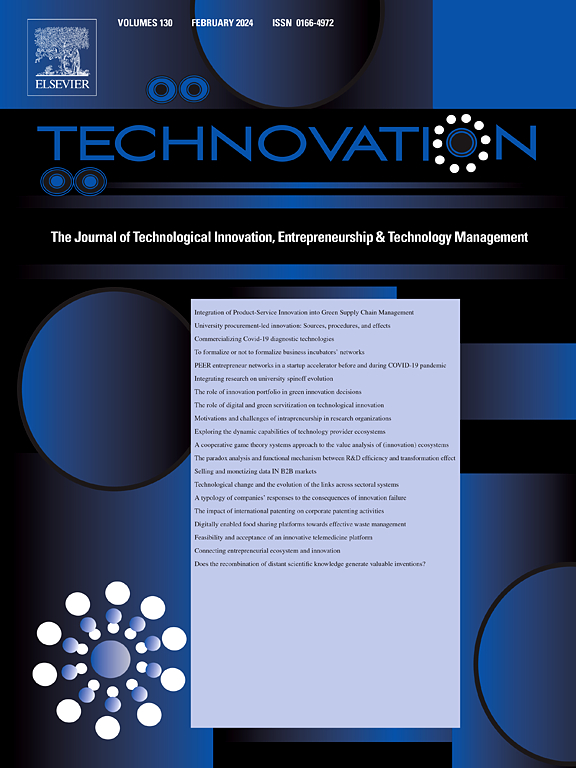以类型学方法了解科学园的多样性
IF 10.9
1区 管理学
Q1 ENGINEERING, INDUSTRIAL
引用次数: 0
摘要
科技园是知识转移、科技商品化和商业发展的枢纽,在促进创业和创新方面发挥重要作用。尽管它们日益重要,但现有的分类未能充分反映它们的多样性。本研究通过提出一种基于两个关键维度的新类型来解决这一差距:所有权和战略导向。我们将它们分为四种类型——研究园区、技术园区、工业园区和传统园区——提供了一个框架,以加强理解、战略规划和政策制定。为了从经验上验证这种类型,我们分析了全球180个科学园区,它们都是国际科学园区和创新地区协会(IASP)的正式成员。分类依赖于多个机构来源的数据,包括IASP目录、国家科学园区协会的报告和个别园区网站。我们的方法引入了一个三层分类:i)类型学,它建立了总体结构;Ii)类型,代表类型学中的特定类别;iii)聚类,进一步将类型划分为子集,增加分类系统的深度。集群是该模型在IASP正式成员中实际应用的结果。本研究将科技园划分为四种类型和九个集群,以了解其独特的需求和挑战,为更有效的政策和管理策略提供信息。最终,这项研究通过提供一个完善的分类系统,提高对科学园区多样性和战略作用的理解,有助于更广泛地讨论科学园区。本文章由计算机程序翻译,如有差异,请以英文原文为准。
A typology approach to understanding the diversity of Science Parks
Science Parks play a crucial role in fostering entrepreneurship and innovation, acting as hubs for knowledge transfer, technology commercialization, and business development. Despite their growing importance, existing classifications fail to adequately capture their diversity. This study addresses this gap by proposing a novel typology based on two key dimensions: ownership and strategic orientation. We categorize them into four types—Research Parks, Technology Parks, Industrial Parks, and Traditional Parks—providing a framework that enhances understanding, strategic planning, and policymaking. To empirically validate this typology, we analyse 180 Science Parks worldwide, all full members of the International Association of Science Parks and Areas of Innovation (IASP). The classification relies on data from multiple institutional sources, including IASP directories, reports from national Science Park associations, and individual park websites. Our approach introduces a three-tier classification: i) typology, which establishes the overarching structure; ii) types, representing specific categories within the typology; and iii) clusters, further categorize the types into subsets, adding depth to the classification system. Clusters are the results of the practical application of the model to IASP's full members. By categorizing Science Parks into four types and nine clusters, this study provides insights into their distinct needs and challenges, informing more effective policy and management strategies. Ultimately, this research contributes to the broader discourse on Science Parks by offering a refined classification system that improves understanding of their diversity and strategic roles.
求助全文
通过发布文献求助,成功后即可免费获取论文全文。
去求助
来源期刊

Technovation
管理科学-工程:工业
CiteScore
15.10
自引率
11.20%
发文量
208
审稿时长
91 days
期刊介绍:
The interdisciplinary journal Technovation covers various aspects of technological innovation, exploring processes, products, and social impacts. It examines innovation in both process and product realms, including social innovations like regulatory frameworks and non-economic benefits. Topics range from emerging trends and capital for development to managing technology-intensive ventures and innovation in organizations of different sizes. It also discusses organizational structures, investment strategies for science and technology enterprises, and the roles of technological innovators. Additionally, it addresses technology transfer between developing countries and innovation across enterprise, political, and economic systems.
 求助内容:
求助内容: 应助结果提醒方式:
应助结果提醒方式:


